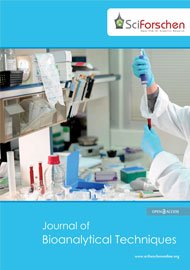
Assistant Professor
Life Sciences Department
King Fahd University of Petroleum and Minerals
Saudi Arabia
Education
Ph.D. (Center for Biotechnology, Biochemistry Dept.) *Imperial College for Science, Technology andMedicine, London University, UK (18-07-1990).
Biography
He did his PhD from Imperial College for Science, Technology and Medicine in the field of enzyme biotechnology and protein chemistry under the supervision of Prof. Brian S Hartley, FRS and then joined The National Institute for Biotechnology and Genetic Engineering, (NIBGE), Faisalabad, Pakistan where he worked on the enzymology of xylan and cellulose degradation in addition to teaching MPhil (biotechnology) courses. In 2001, he joined The School of Biotechnology and Biomolecular Sciences, University of New South Wales, Sydney, Australia where he worked on the protein-structure-function-stability analysis of extremophilic and genetically- and chemically-modified proteins and enzyme biotechnology using a variety of tools that included chromatography, electrophoresis, biocalorimetry (iTC, DSC), fluorescence and CD spectroscopy and mass spectrometry etc. He is currently at the Life Sciences department, King Fahd University of Petroleum and Minerals,Dhahran, Saudi Arabia.
Research Interest
- Protein structure-function-stability relationship
- Kinetic, biochemical, biophysical and thermodynamic characterization of enzymes of biotechnological importance.
- Extremophilic and Polyextremophilic enzymes
- Chemical/genetic modification of enzymes to enhance their catalytic properties.
- Biophysical tools for protein analysis (Biocalorimetry, fluorescence spectroscopy, circular dichroism, electrophoresis, chromatography etc)
- Bioinformatics tools for protein analysis
- Enzyme biotechnology (isolation, characterization and applications)
- Magnetic enzymes and enzyme recycling
- Understanding protein stability and prolonging enzyme activity
Professional Activities:
Technicalandpersonalskills:
- Structural analysis of bio-macromolecules using techniques such as fluorescence spectrometry, circular dichroism (CD) and UV-Vis spectrophotometry, calorimetry, mass spectrometry, protein electrophoresis, colorimetric and calorimetric enzyme assays
- Protein purification using column chromatography from fungi, bacteria, plants etc
- Techniques used for protein structural studies in collaboration with other specialist groups include mass spectrometry, small-angle X-ray scattering (SAXS) and X-ray crystallography
- Supervision/co-supervision ofresearch students, management of protein chemistry and enzyme technology lab and equipment, training students and colleagues.
- Designing and conducting experiments, analysing data and writing papers and grant applications regarding industrial applications of enzymes.
- Excellent written and oral communication skills including seminars, lectures, paper/review writing.
- Team worker, friendly and enjoys collaborative research
- IT literate, competent in Microsoft-Office, data analysis softwares (Origin, SigmaPlot, Enzyme kinetics) and bioinformatics tools.
- Completed Radiation Safety Training, Hazardous Substances, GreenLab Enviro Compliance, Lab Safety Awareness – STAFF, OHS for Research Supervisors courses and attended OHS Awareness Online Course offered by UNSW.
Publications
- Siddiqui KS2015.Defying activity-stability trade-off in enzymes:taking advantage of entropyto enhance activity and thermostability(Crit. Rev. Biotechnol. In press).
- Siddiqui KS 2015.Some like it hot, some like it cold: temperature dependent biotechnological applications and improvements in extremophilic enzymes. Biotechnol. Adv. In press (DOI: 10.1016/j.biotechadv.2015.11.001).
- Guerriero G, Hausman J-F, Strauss J, Ertan H and Siddiqui KS (2015)Lignocellulosic Biomass:Biosynthesis, Degradation and Industrial Utilization.Eng. Life Sci.(in Press)
- Ertan H, Cassel C, Verma A, Poljak A, Charlton T, Aldrich-Wright J, Omar SM, Siddiqui KSand Cavicchioli R (2015) A new broad specificity alkaline metalloprotease from a Pseudomonas sp. Isolated from refrigerated milk: role of calcium in improving enzyme productivity. J. Mol. Catal. B:Enzymatic. 113:1-8
- Guerriero G, Hausman J-F, Strauss J, Ertan H and Siddiqui KS (2015)Destructuring plant biomass: focus on fungal and extremophilic cell wall hydrolases. Plant Sci. 234:180-193
- Siddiqui KS, Ertan H, Charlton T, Poljak A, Dawood Khaled AK, Yang X, Marshall G and CavicchioliR (2014) Versatile peroxidase degradation of humic substances: use of isothermal titration calorimetry to assess kinetics, and applications to industrial wastes. J. Biotechnol. 178:1-11.
- Najnin T, Siddiqui KS, Curmi PM, Cavicchioli R 2014. Characterization of a temperature responsive two-component regulatory system in the Antarctic methanogen, Methanococcoidesburtonii. 28th Annual Symposium of the Protein-Society, San Diego, CA, 27-30 Jul 2014. Protein Science, 23:109-110.
- Das T, Sehar S, Koop L, Wong YK, Ahmed S, Siddiqui KS, Manefield M (2014) Influence of calcium in extracellular DNA mediated bacterial aggregation and biofilm formation.PLoS One (9:e91935. doi: 10.1371/journal.pone.0091935)
- Siddiqui KS and Cavicchioli R (2006) Cold adapted enzymes. Annual Review of Biochemistry. Vol. 75: 403-433.
- Cavicchioli R, Siddiqui KS, Sowers KR and Andrews D (2002) Low-temperature extremophiles and their applications. Current Opinions in Biotechnology. 13: 253-261.
- Cavicchioli R, Charlton T, Ertan H, Omar SM, Siddiqui KS and Williams TJ (2011) Biotechnological uses of enzymes from psychrophiles. Microbial Biotechnology 4:449-460.
- Siddiqui KS, Williams TJ, Wilkins D, Yau S, Allen MA, Brown MW, Lauro FM and Cavicchioli R (2013) Psychrophiles. Annual Review of Earth and Planetary Sciences. Vol. 41: 87-115.
- Ertan H, Siddiqui, KS, Muenchhoff J, Charlton T, Cavicchioli R (2012) Kinetic and thermodynamic characterization of the functional properties of a hybrid versatile peroxidase using isothermal titration calorimetry: insight into manganese peroxidase activation and lignin peroxidase inhibition. Biochimie 94:1221-1231.
- Julia Muenchhoff J, Siddiqui KS, Neilan BA (2012) Identification of two residues essential for the stringent substrate specificity and active site stability of the prokaryotic L-arginine:glycineamidinotransferaseCyrA. FEBS 279:805-815.
- Pilak O, Harrop SJ, Siddiqui KS, Chong K, De Francisci D, Burg D, Williams TJ, Cavicchioli R, Curmi PM 2011 Chaperonins from an Antarctic archaeon are predominantly monomeric: crystal structure of an open state monomer. Environ Microbiol. 13:2232-2249.
- Muenchhoff J, Siddiqui KS, Poljak A, Raftery MJ, Barrow KD, Neilan BA (2010)A novel prokaryotic L-arginine:glycineamidinotransferase is involved in cylindrospermopsin biosynthesis, FEBS J 277(18):3844-3860.
- De Francisci D, Campanaro S, Kornfeld G, Siddiqui KS, Williams TJ, Ertan H, Treu L, Pilak O, Lauro FM, Harrop SJ, Curmi PM, Cavicchioli R (2010) The RNA polymerase subunits E/F from the Antarctic archaeon Methanococcoidesburtonii binds to specific species of mRNA. Environ. Microbiol. 13:2039-2055.
- Siddiqui KS, Poljak A, De Francisci D, Guerriero G, Pilak O, Burg D, Raftery MJ, Parkin DM, Trewhella J, Cavicchioli R (2010) A chemically modified α-amylase with a molten-globule state has entropically driven enhanced thermal stability. Protein Eng Des Sel 23(10):769-780.
- Siddiqui KS, Parkin DM, Curmi PM, De Francisci D, Poljak A, Barrow K, Noble MH, Trewhella J, Cavicchioli R (2009) A novel approach for enhancing the catalytic efficiency of a protease at low temperature: reduction in substrate inhibition by chemical modification. BiotechnolBioeng. 103(4):676-86.
- Allen MA, Lauro FM, Williams TJ, Burg D, Siddiqui KS, De Francisci D, Chong KW, Pilak O, Chew HH, De Maere MZ, Ting L, Katrib M, Ng C, Sowers KR, Galperin MY, Anderson IJ, Ivanova N, Dalin E, Martinez M, Lapidus A, Hauser L, Land M, Thomas T, Cavicchioli R (2009) The genome sequence of the psychrophilic archaeon, Methanococcoidesburtonii: the role of genome evolution in cold adaptation. ISME J.3(9):1012-35.
- Afzal AJ, Bokhari SA and SiddiquiKS (2007) Kinetic and thermodynamic study of a chemically modified highly active xylanase from Scopulariopsissp: existence of an essential amino group. ApplBiochemBiotechnol. 141(2-3):273-97.
- Siddiqui KS, Poljak A, Guilhaus M, Francisci D, Curmi PMG, Feller G, D’Amico S, Gerday C, Uversky V N and Cavicchioli R (2006) The role of lysine versus arginine in enzyme cold-adaptation: modifying lysine to homo-arginine stabilizes the cold-adapted a-amylase from Pseudoalteramonashaloplanktis. Proteins: Struct. Func. Bioinformatics. 64(2):486-501
- Giaquinto L, Curmi PMG, Siddiqui KS, Poljak A, DeLong E, DasSarma S and Cavicchioli R (2007). The Structure and Function of Cold Shock Proteins (Csps) in Archaea. J. Bacteriol. 189: 5738-5748
- Siddiqui KS, Feller G, D’Amico S, Gerday C, Giaquinto L and Cavicchioli R (2005a) The active site is the least stable structure in the unfolding pathway of a multi-domain cold-adapted a-amylase. J. Bacteriol. 187 (17): 6197-6205
- Siddiqui KS, Poljak A, Guilhaus M, Feller G, D’Amico S, Gerday C and Cavicchioli R (2005b) The role of disulphide-bridges in the activity and stability of a cold-active a-amylase. J. Bacteriol. 187 (17): 6206-6212
- Siddiqui KS and Cavicchioli R (2005) Improved thermal stability and activity in the cold-adapted lipase B from Candida Antarctica following chemical modification with oxidized polysaccharides. Extremophiles 9 (6): 471-476
- Afzal AJ, Ali S, Latif F, Rajoka MI and Siddiqui KS (2005) Innovative kinetic and thermodynamic analysis of a purified super active xylanase from Scopulariopsissp. Appl. Biochem. Biotechnol. 120(1) 51-70
- Siddiqui KS, Afzal AJ, Bokhari SA and Singh S (2004) A Novel thermodynamic relationship based on Kramers Theory for studying enzyme kinetics under high viscosity. IUBMB Life 56 (7): 403-407
- Siddiqui KS, Poljak A and Cavicchioli R (2004) Improved activity and stability of alkaline phosphatases from psychrophilic and mesophilic organisms by chemically modifying aliphatic or amino groups using tetracarboxy-benzophenone derivatives. Cellular and Molecular Biology 50 (5): 657-667.
- Siddiqui KS, Cavicchioli, R.and Thomas, T (2002) Thermodynamic activation properties of elongation factor 2 (EF-2) proteins from psychrotolerant and thermophilic archaea. Extremophiles 6: 143-150
- Bokhari SA, Afzal AJ, Rashid MH, Rajoka MI and Siddiqui KS (2002) Coupling of surface carboxyls of carboxymethylcellulase with aniline via chemical modification: extreme thermostabilization in aqueous and water-miscible organic mixtures. Biotechnol. Progress. 18: 276-281.
- Siddiqui KS, NajmusSaqib, AA, Rashid MH and Rajoka MI. (2000) Carboxyl group modification significantly altered the kinetic properties of purified carboxymethylcellulase from Aspergillus niger. Enzyme & Microbial Technol. 27, 467-474.
- Siddiqui KS, Rangarajan M, Hartley BS, Kitmitto, A, Panico, M, Blench, IP and Morris HR (1993) D-xylose isomerase: partial proteolysis with thermolysin. Biochem J. 289, 201‑208.
- Siddiqui KS, Loviny‑Anderton T, Rangarajan M and Hartley BS (1993) Arthrobacter D‑xylose isomerase: Chemical modification of carboxyl groups and protein engineering of pH optimum. Biochem J. 296(3), 685‑691.
- Afzal AJ, Bokhari SA, Rashid MH, Rajoka MI and Siddiqui KS (2000) Two simple and rapid methods for the detection of polymer degrading enzymes on high resolution alkaline cold in situ native (HiRACIN)-PAGE and high resolution in situ inhibited native (HiRISIN)-PAGE. Biotechnol. Lett. 22(11) 957-960.
- Siddiqui KS, Shemsi AM, Anwar MA, Rashid MH and Rajoka MI (1999) Partial and complete alteration of surface charges of carboxymethylcellulase by chemical modification: thermostabilization in water‑miscible organic solvent. Enzyme. Microbiol. Technol. 24, 599-608.
- Rashid MH and Siddiqui KS (1998) Carboxyl group modification: High temperature activation of charge neutralized and charge reversed beta‑glucosidase from Aspergillus niger. Biotechnol. Appl. Biochem. 27, 231-237.
- Rashid MH and Siddiqui KS (1998) Thermodynamic and kinetic study of stability of the native and chemically modified beta‑glucosidases from Aspergillus niger. Process Biochemistry. 33(2), 109‑115.
- Shemsi AM, Ahmad T, Rashid MH and Siddiqui KS (1997) Automation of compartmental electrophoresis apparatus for the separation of non‑covalently attached polysaccharides from proteins. Enzyme Microbial. Technol. 22(1), 76‑77.
- Rashid, MH, NajmusSaqib AA, Rajoka MI and Siddiqui KS (1997) Native Enzyme Mobility Shift Assay (NEMSA): A new method for monitoring the carboxyl group modification of carboxymethylcellulase from Aspergillus niger. Biotechnol. Techniques, 11:4, 245‑247.
- Siddiqui KS, NajmusSaqib AA, Rashid MH and Rajoka MI (1997) Thermostabilization of carboxymethylcellulase from Aspergillus niger by carboxyl group modification. Biotechnol. Lett. 19:4, 325‑329.
- Siddiqui KS, Rashid MH, Shemsi AM and Rajoka MI (1994) A simple and non‑destructive method for the separation of polysaccharides from beta‑glucosidase produced extracellularly by Aspergillus niger.Enzyme.Microbial.Technol. 16 (10), 912‑917.
- Siddiqui K.S, Azhar M.J, Rashid MH and Rajoka MI (1996) Activity and thermostability of Carboxymethylcellulase from Aspergillus niger is strongly influenced by non‑covalently attached polysaccharides. World.J.Microbiol. Biotechnol. 12(3), 213‑216.
- Rashid MH and Siddiqui KS (1996) The stability of extracellular beta‑glucosidase from Aspergillus niger is significantly enhanced by the non‑covalently attached polysaccharides. Folia Microbiol. 41(4), 341‑346.
- Siddiqui KS, Rashid, MH, Durrani, IS, Ghauri TM and Rajoka MI (1997) Purification and characterization of an intracellular beta‑glucosidase from Cellulomonasbiazotea. World. J. Microbiol. Biotechnol. 13, 245‑247.
- Siddiqui KS, Azhar MJ, Rashid MH and Rajoka MI (1997) Stability and identification of active‑site residues of carboxymethylcellulases from Aspergillus niger and Cellulomonasbiazotea. Folia Microbiol. 42, 312‑318.
- Siddiqui KS and Ali R (1991) A sensitive and simplified method for staining sodium dodecyl sulphate protein gels. Technique, 3 (4), 187‑190.

